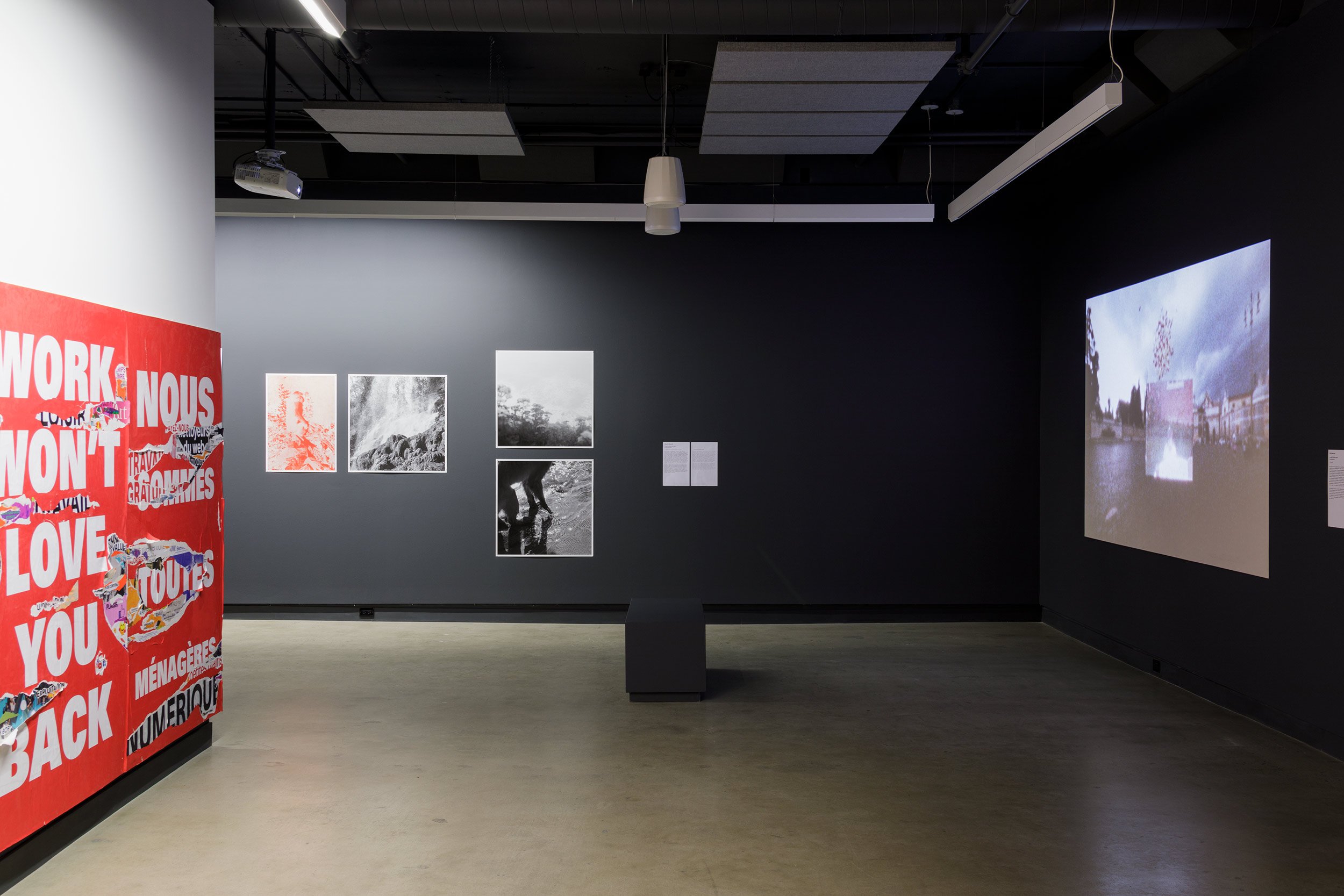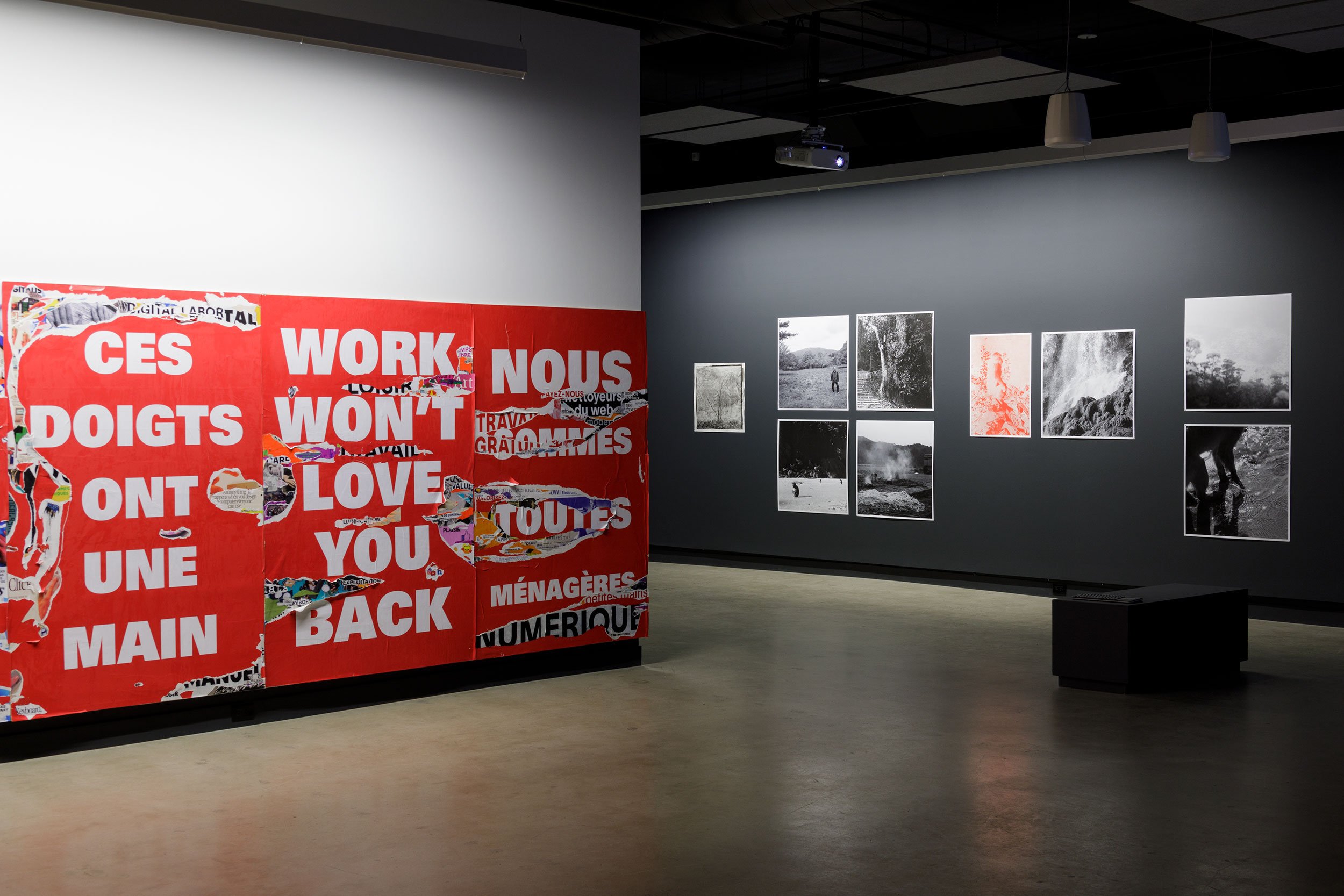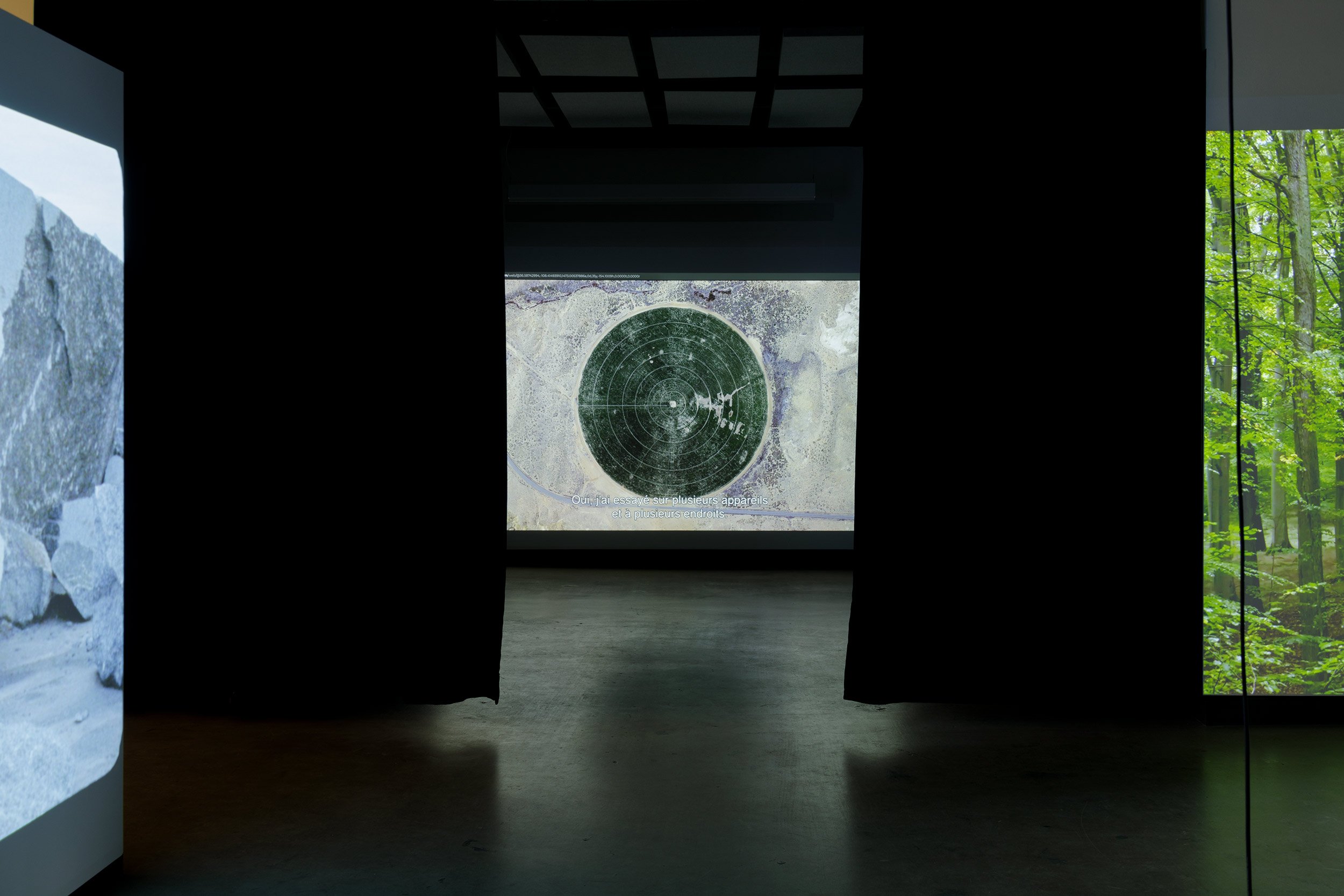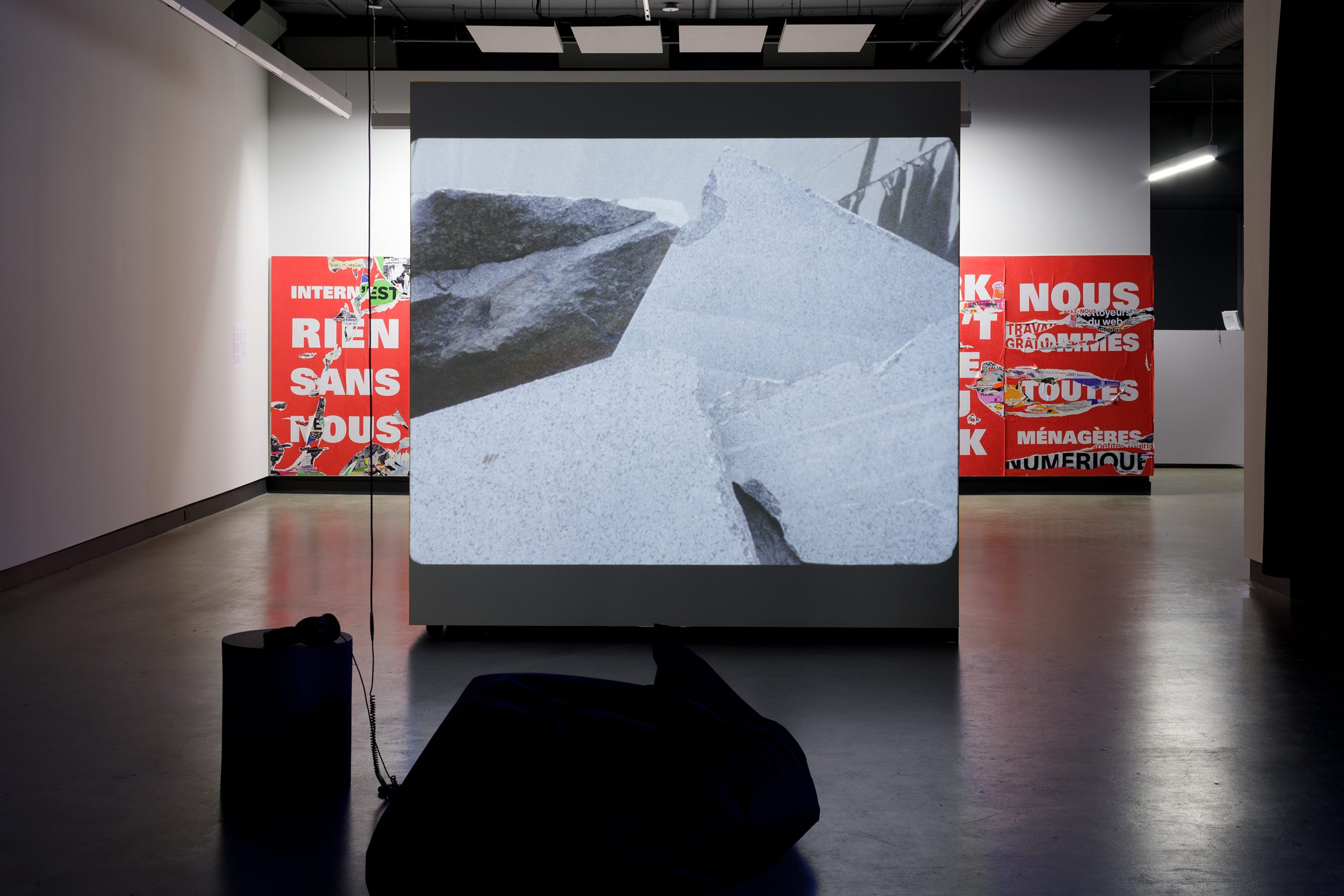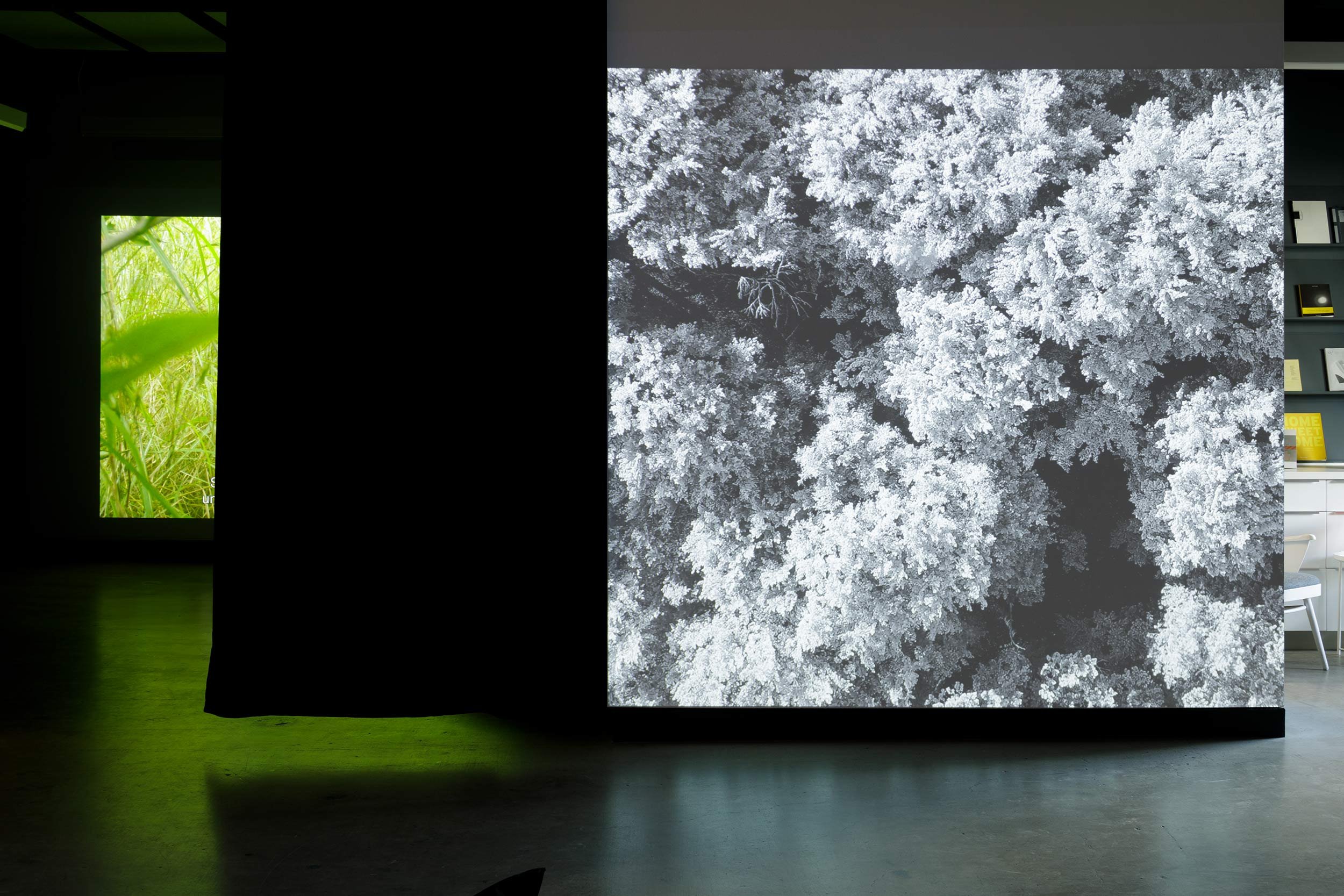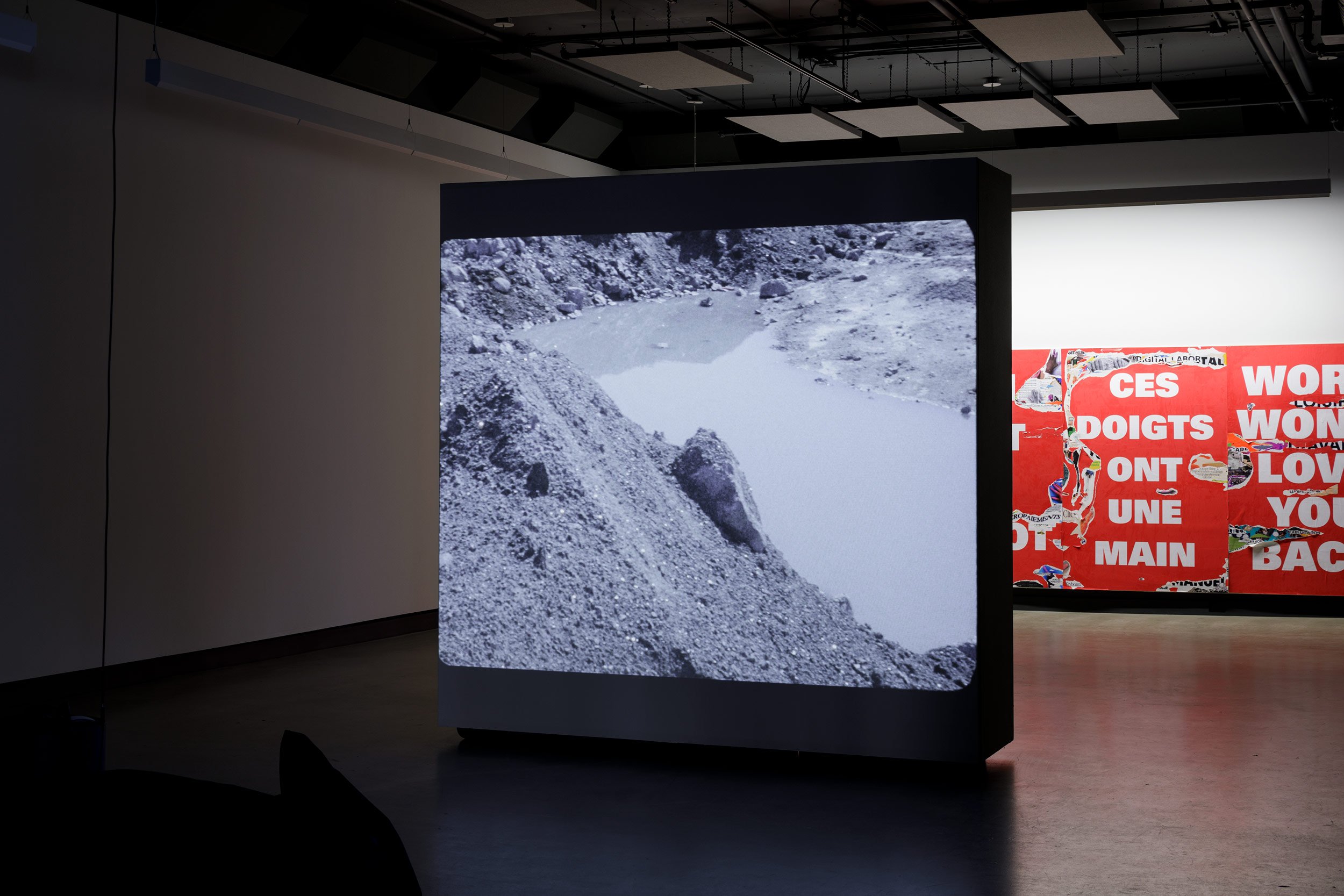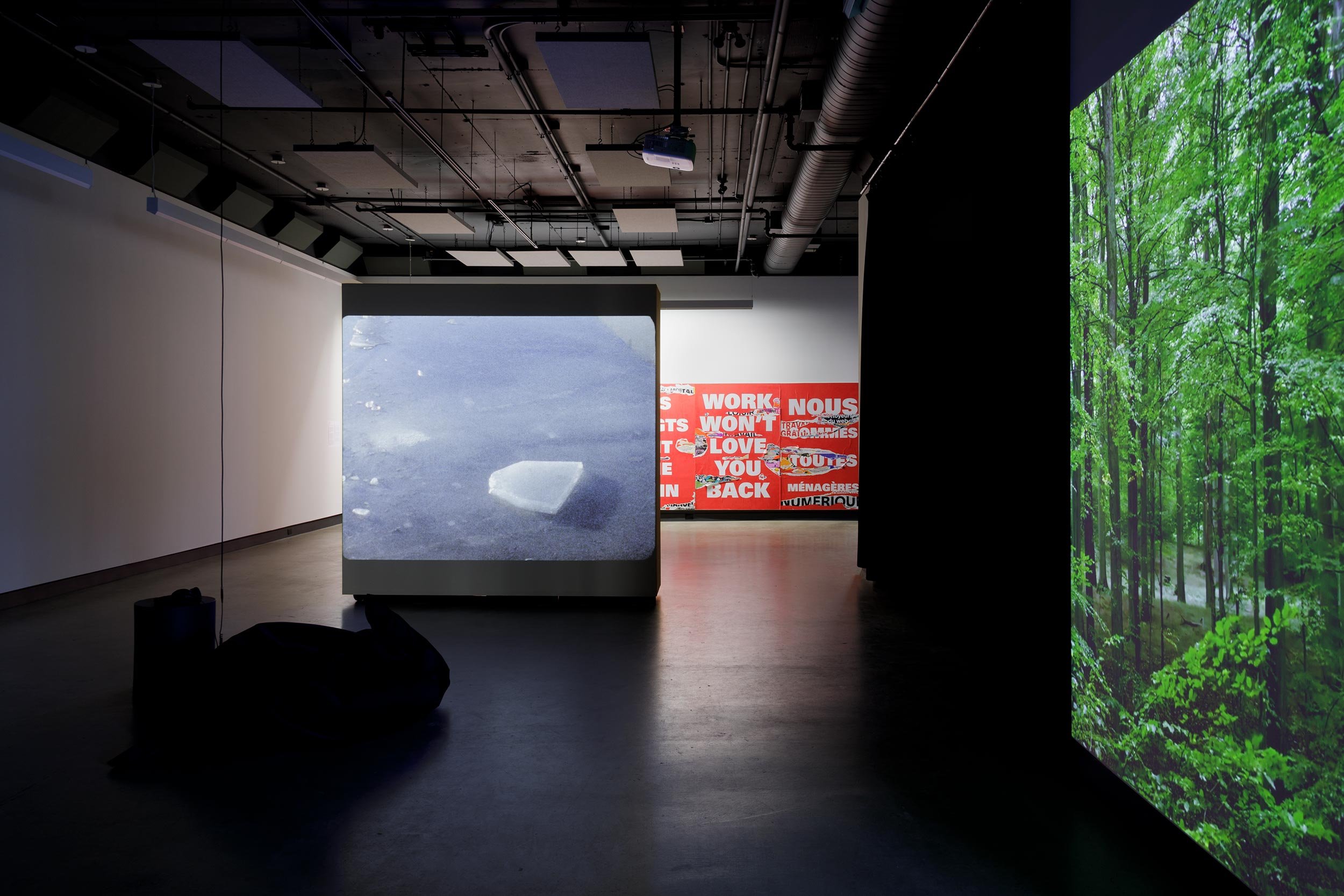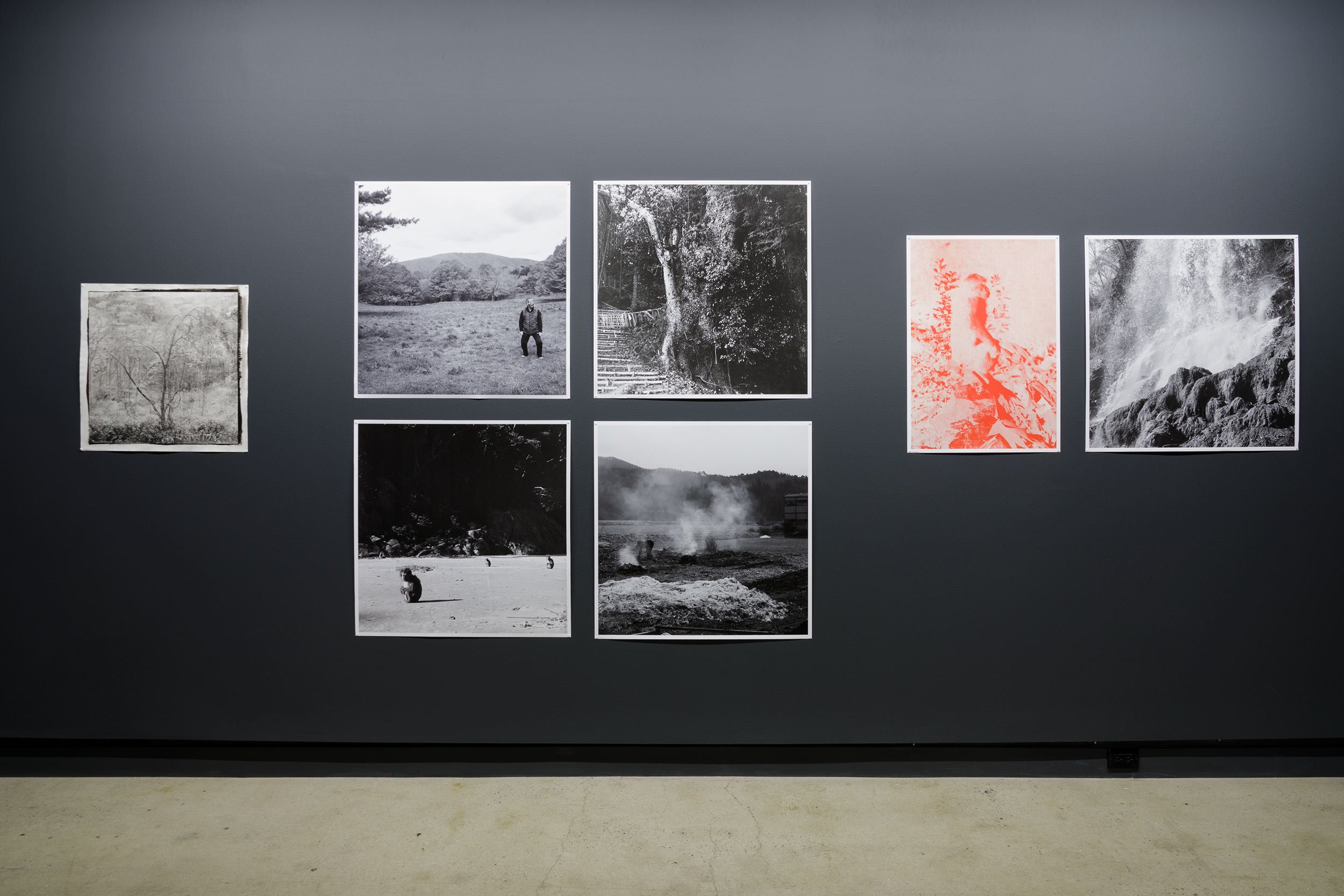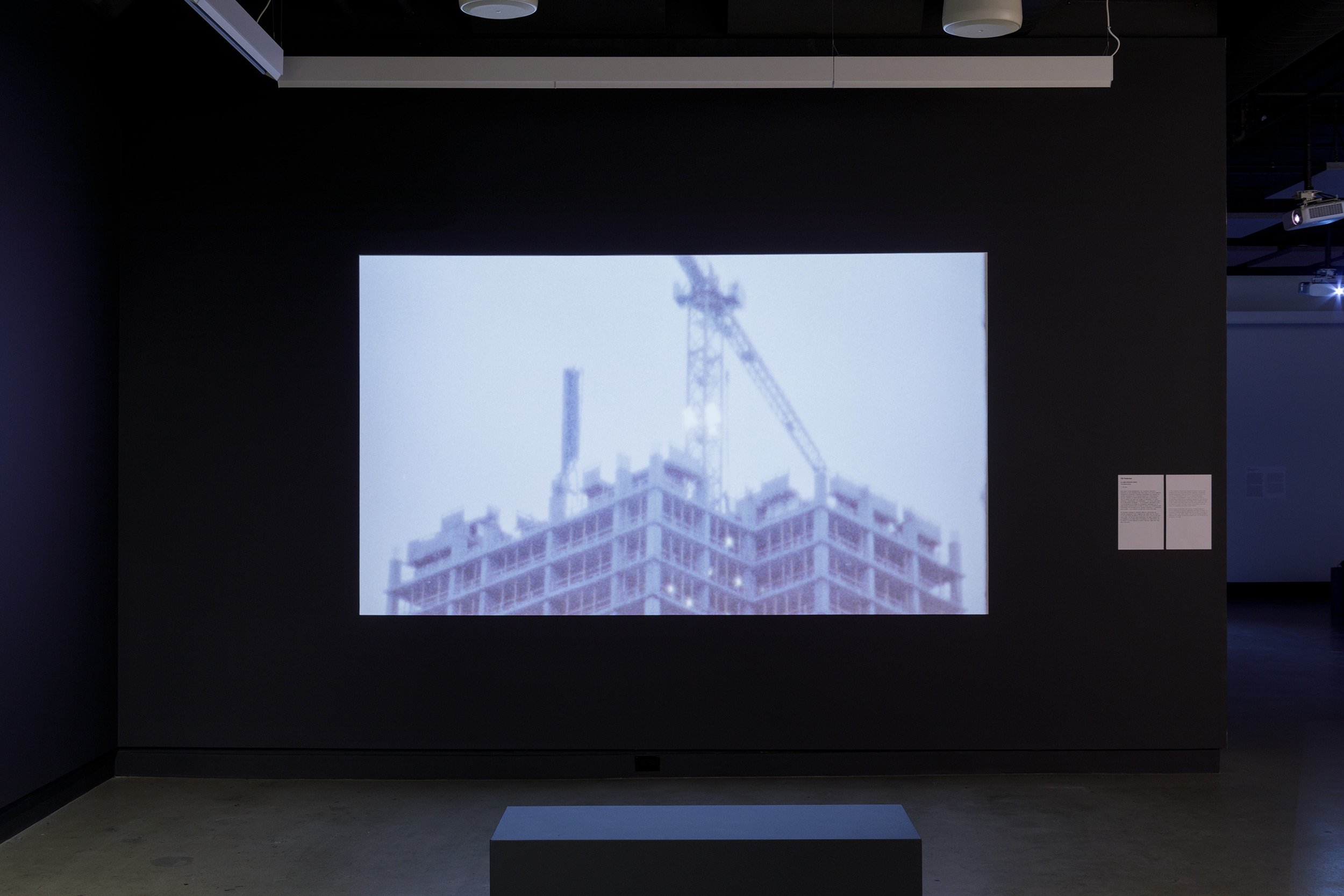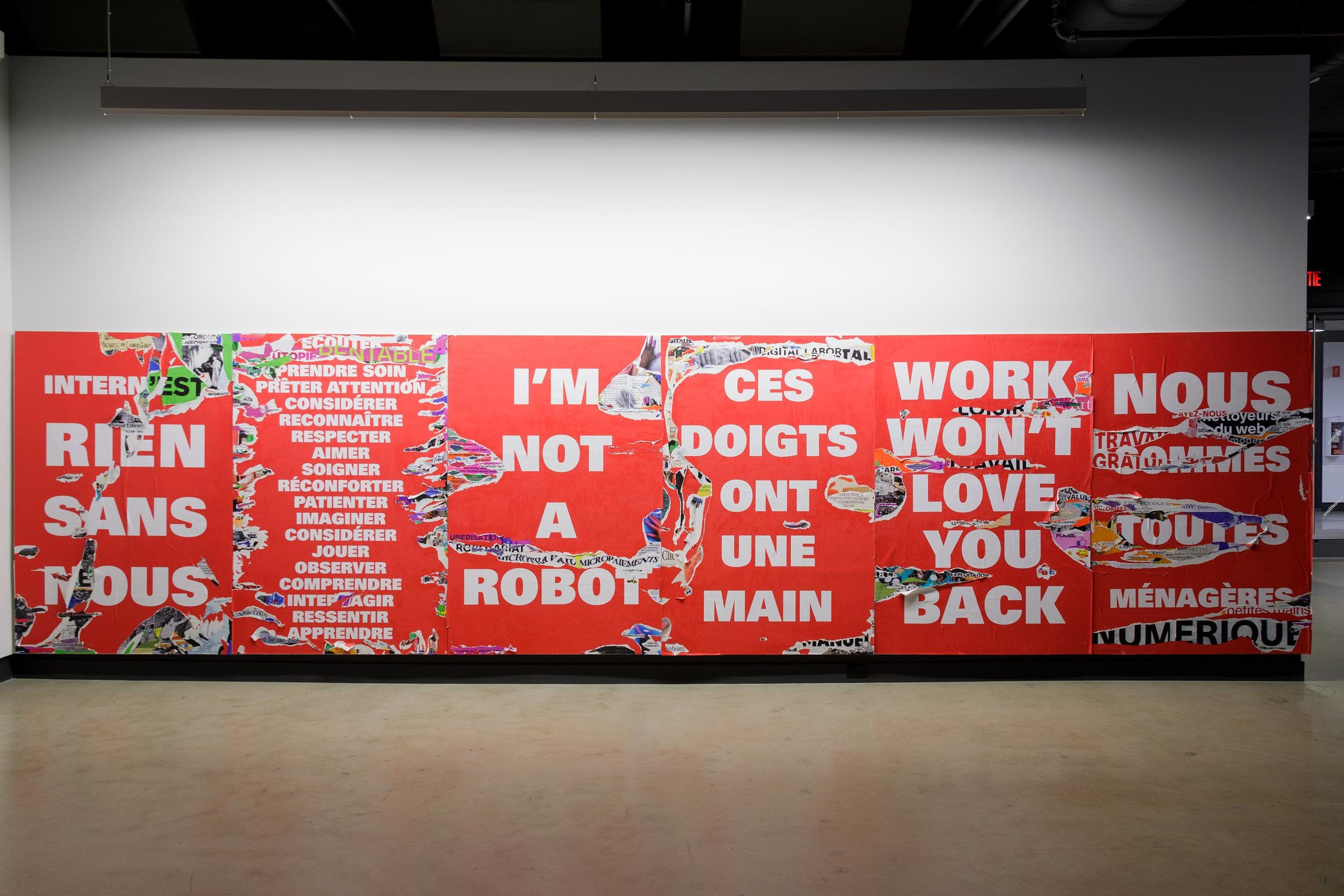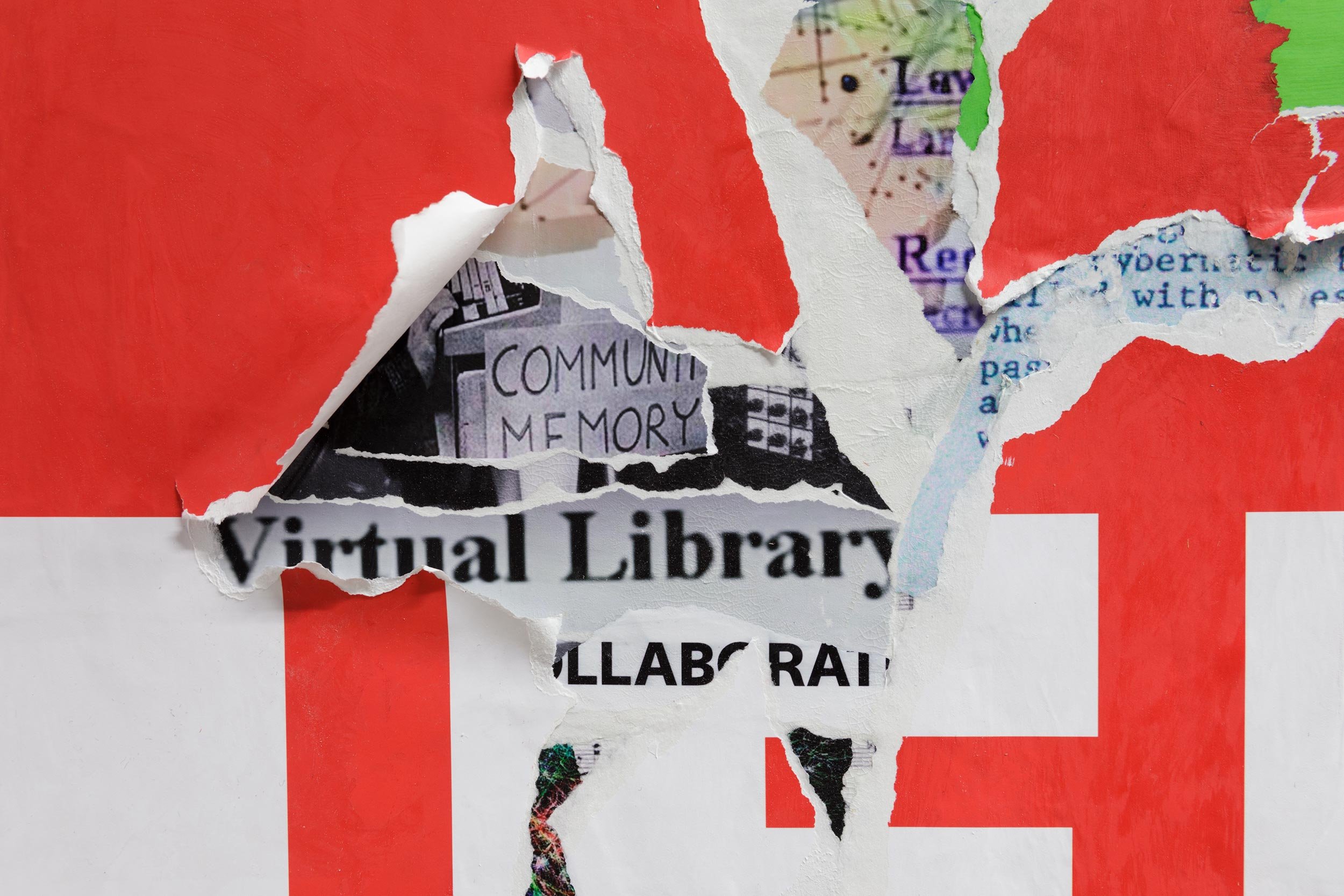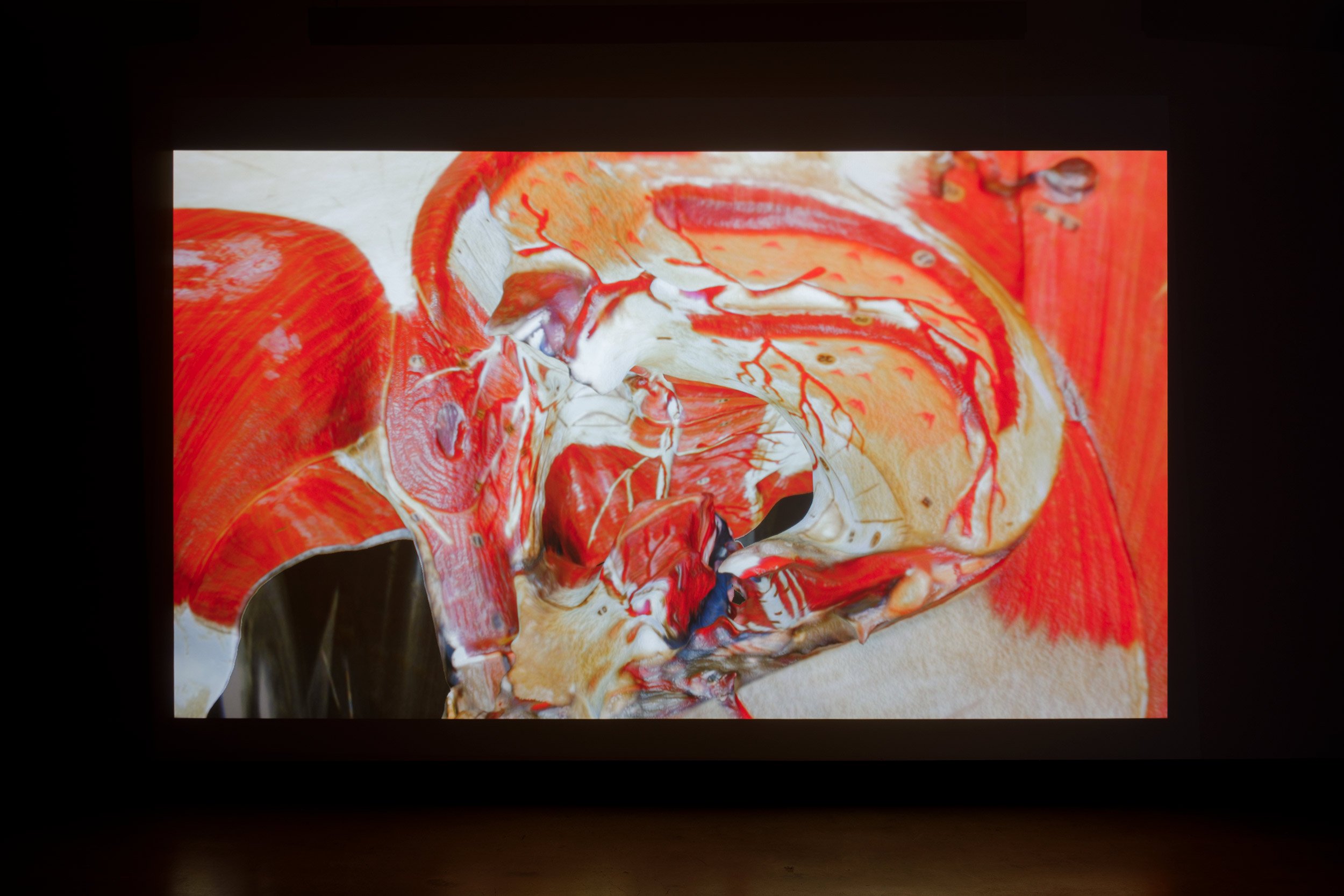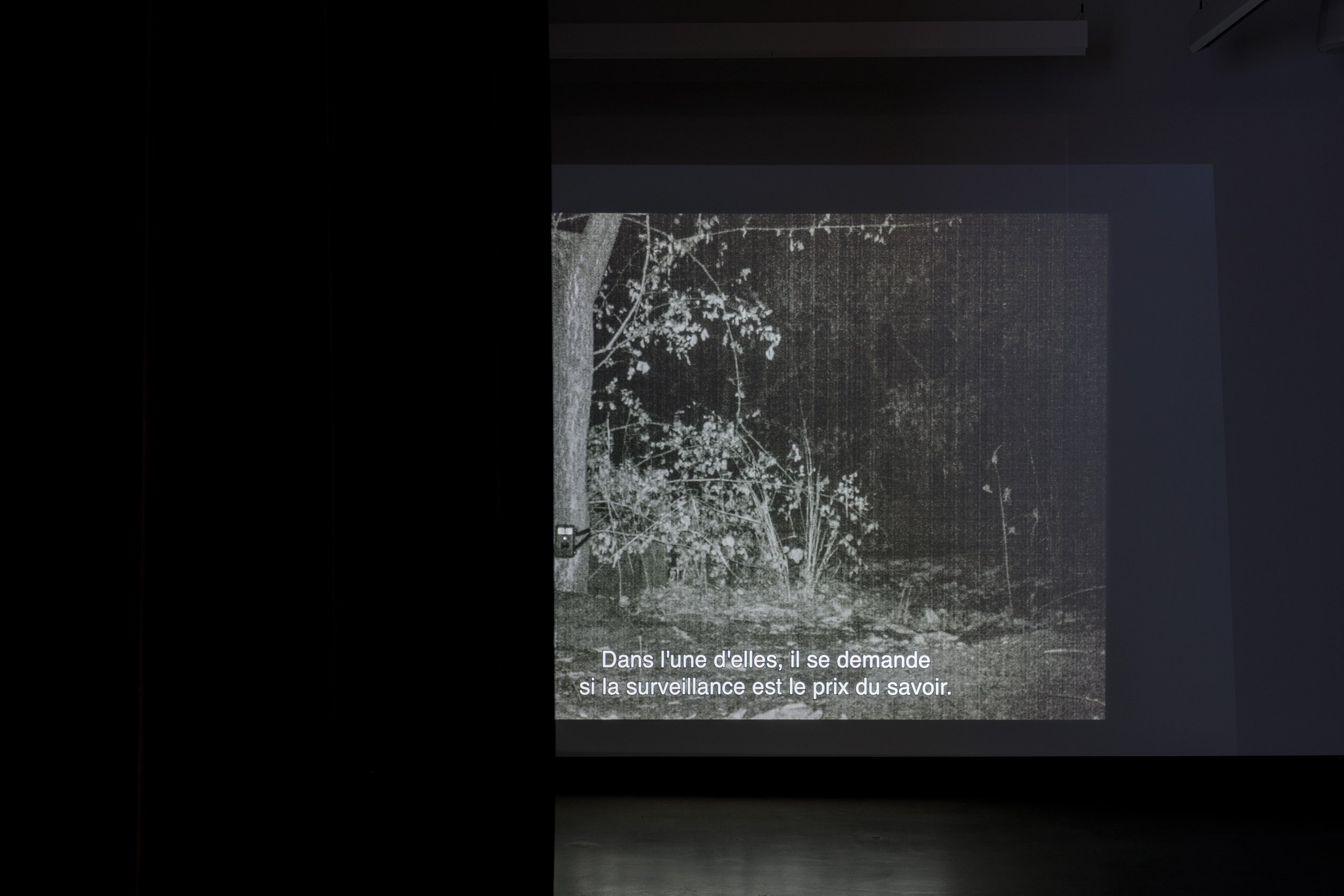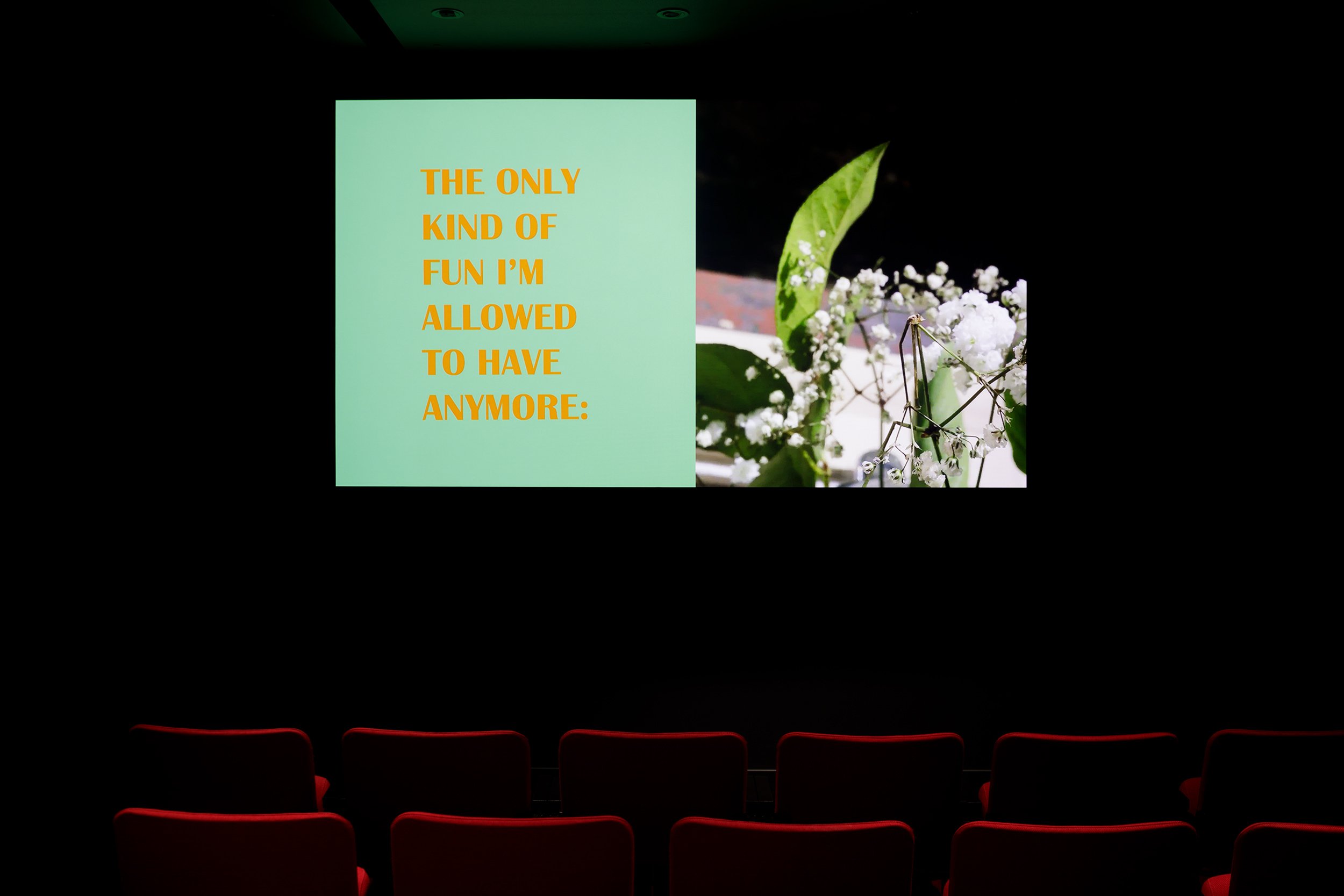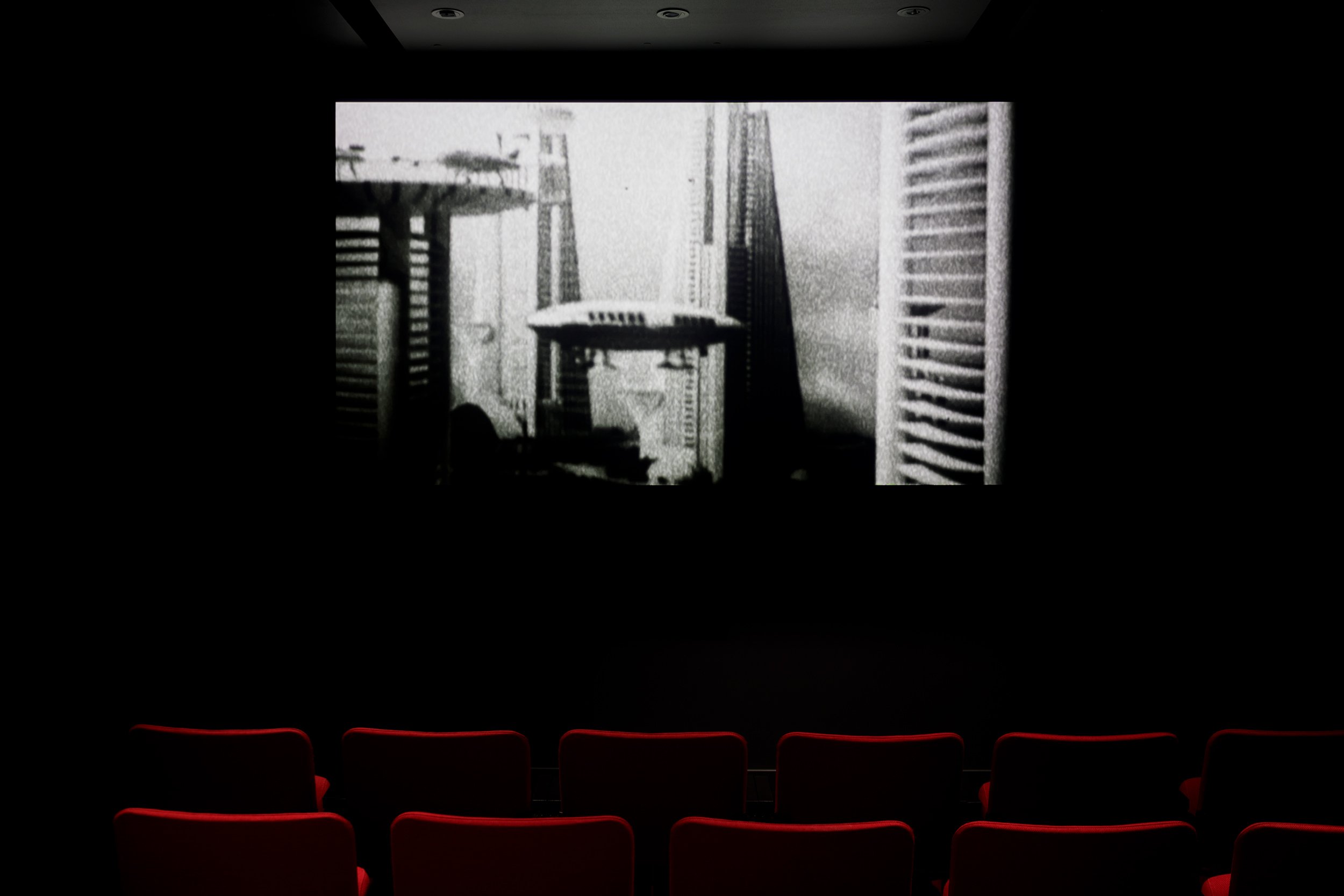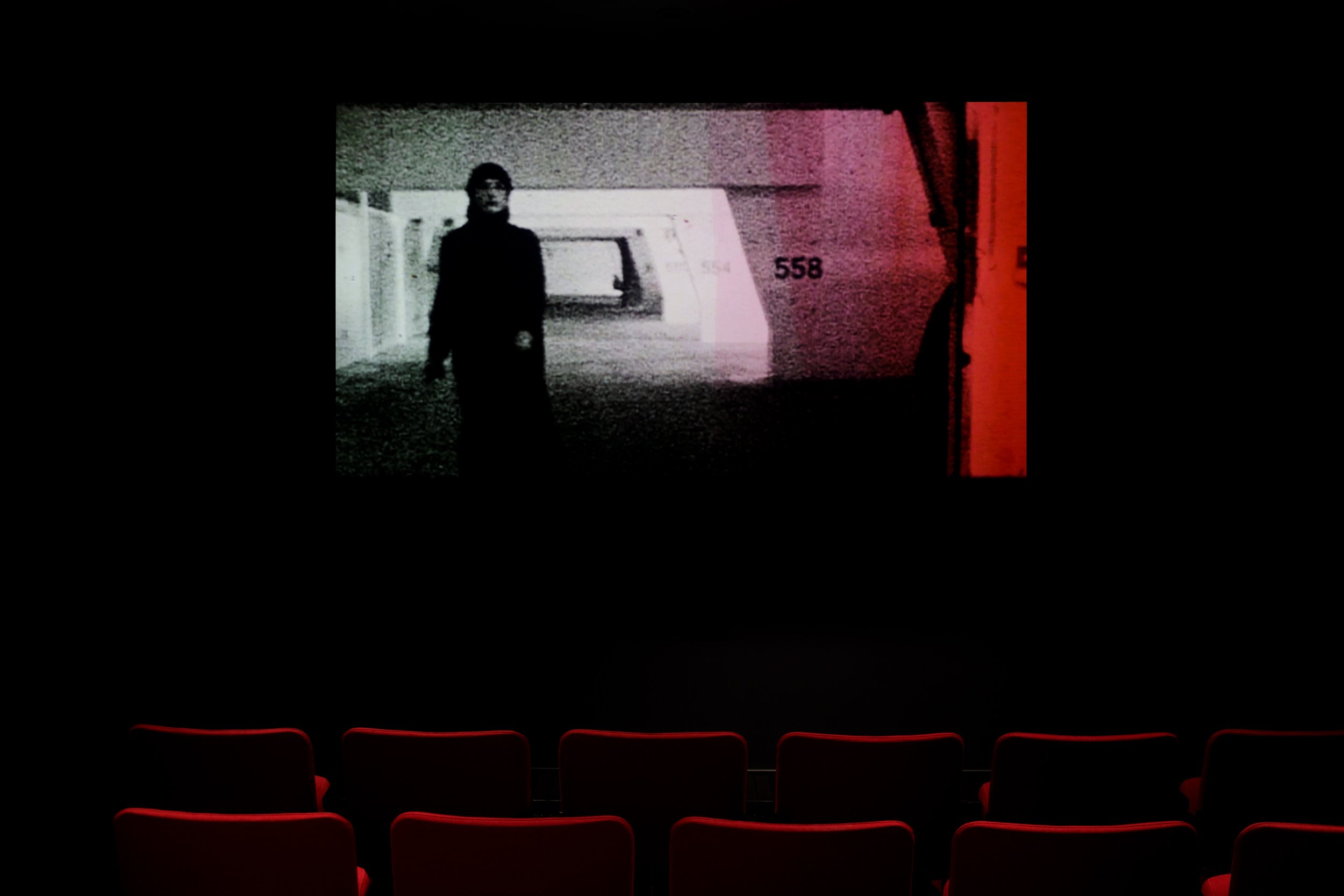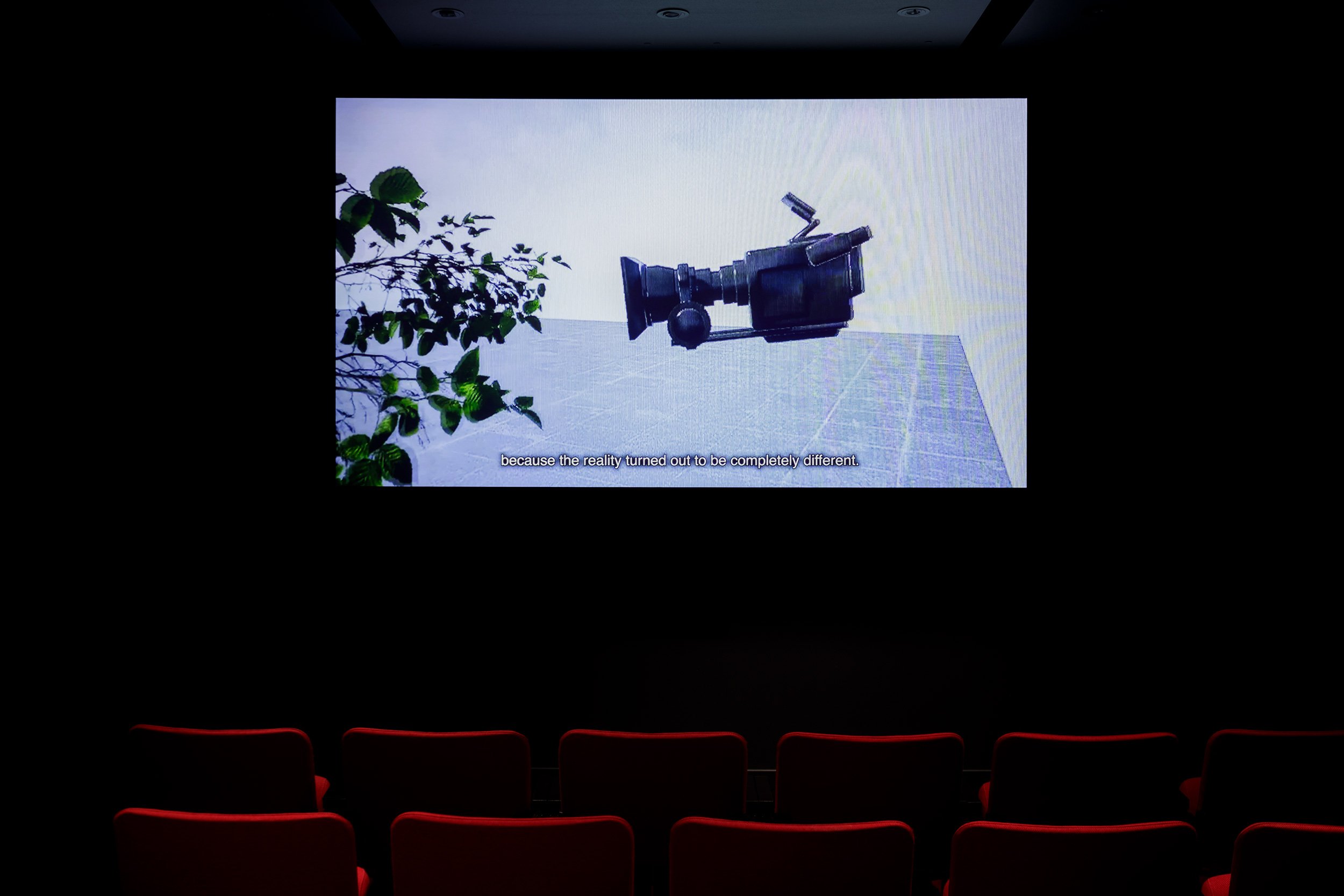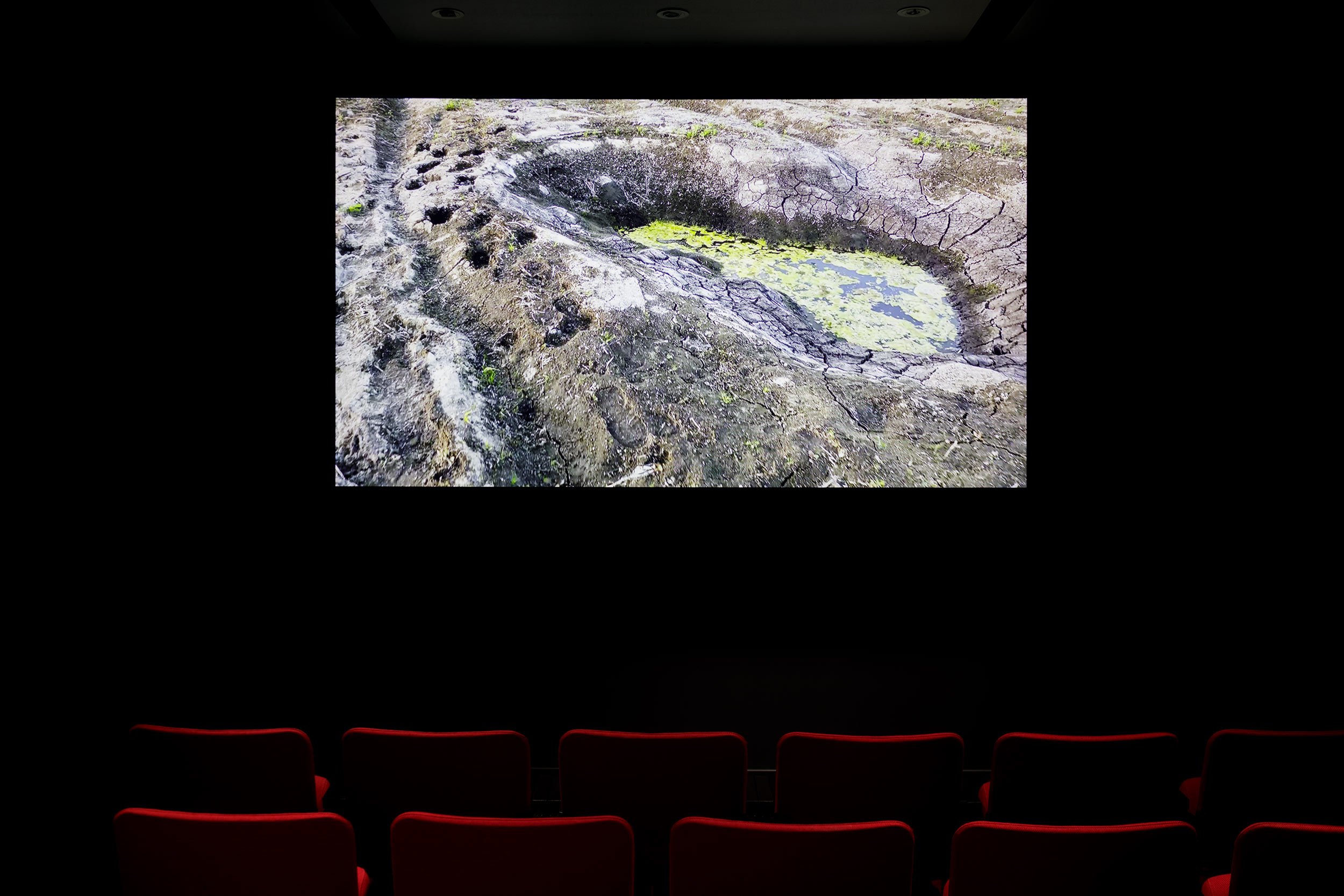Futur antérieur. Missing What Will Be Missed
Marte Aas, Zheng Bo, Maja Ray Borg, Katya Buchatska, Enar de Dios Rodríguez, Duke & Battersby, Masako Miyazaki, OK Pedersen, Karine Savard
From April 18 to June 15, 2024
Opening on April 18 at 6 pm
— Facebook event
The feeling is already palpable. In the near future, we'll miss what we've missed: what we've neglected will take shape as the desire to recover what now belongs to the past. The anticipation of this future, or the drive towards it, writes the past into the present, infusing the present with nostalgia. This nostalgia, for both the past and the future, involves projecting a constructed image upon another: an image cultivated from the romantic hope of refinding a bygone era.
Futur antérieur. Missing What Will Be Missed, brings together works by ten local, Canadian, and international artists to address notions of futurity concerning the ecological crisis — or, perhaps more precisely, faced with the evidence that everything is interconnected, the paradox of being as much haunted by a presumably failed future as we are by our past.
This exhibition differentiates itself from many others by exploring how artists might represent such ideas without aestheticizing collected information, documentation, or appropriated scientific methods. Rather, incidences where concepts of representation and romanticization merge or, conversely, clash, are examined. Stretched between realism and idealism, questions are raised about how to project ourselves into the future when the present — and, of course, the past — are beyond us.
-
This video work depicts a future where there are no longer any humans. Amidst a landscape of industrial ruin, a lone dog roams as she contemplates the world that used to be, prosaically listing that which she misses and that which she does not.
How ought a domesticated animal, once subjugated and now wild, judge the reign and collapse of humankind? Perhaps accusatorily? Or, maybe forlornly? Nostalgic yet unromantic, the dog’s banal observations on human life are surprisingly detached: demoting the animal’s best friend from protagonist to supporting character. Such suggests that the Anthropocene was a relatively unremarkable phase in the planet’s history, and ultimately encourages a shift in perspective as to the hierarchy of all things -living or otherwise. Incisively, the work reminds us that absence imparts us with the importance of beings and things. That is, depending on whether or not we miss them.
Marte Aas is a photographer and filmmaker based in Oslo. Her main area of interest is the intersection between contemporary image culture, history, technology and landscape. Her work attempts to address underlying structures and gestures that form political and ideological narratives. Aas studied at The School of Photography at The University of Gothenburg and the National Academy of Fine Arts in Oslo. Her art has been shown internationally at Center of Photography (Copenhagen), EMAF European Media Art Festival, Seoul International New Media Festival, Anthology Film Archives (New York), Scandinavia House (New York) and The National Museum (Oslo). Aas has also published several books and catalogues including Marte Aas – Photography and Film (National Museum , 2010) and Ducks in a Row (Multipress, 2023), and is also one of the founding members of the publishing house Multipress.
Courtesy of Filmform.
-
The work frames a portrait of Grumsin, an ancient beech forest in Brandenburg, Germany, which is recognized as a UNESCO World Heritage site. Barely visible amidst the trees, the artist converses with two scientists, first with Matthias Rillig, specializing in biodiversity and soil ecology, then Roosa Laitinen, who investigates plant adaptation. Contemplating how the adaptation and symbiosis exhibited in plant behavior can be considered political, the artist speculates that in the face of climate crises, humans might look to plant intelligence for solutions. Whereas science seeks to extrapolate causality by isolating factors, plants can integrate complex relationships with their environment. Whereas human innovations favor short-term effects and rapidity, plants develop systems over unfathomably long and slow periods.
This conversation is captured at a distance so that the two humans are miniscule within the greatness of the forest. They stroll across the frame with a slowness that steps in time with plant life. In between conversations, the camera zooms in on the forest plants, capturing tensions through a play of perspective and accumulation of intensities. In some ways, these images dramatize the plants’ movement to an anthropomorphic effect, felt, however, as empathetic rather than voyeuristic, more equal than extractive. The artist’s experimental approach is likewise an extension of his thought exercise. Even if the behavior of plants is not necessarily political, Zheng Bo’s rhizomatic questioning addresses ontologies considered utterly fundamental. Even survival — the impetus through which plant and human evolution are understood — is questioned. What if there were something entirely Other driving life?
Zheng Bo is an ecoqueer artist of ethnic Bai heritage living in a village on the south side of Lantau Island, Hong Kong. Through drawing, dance and film, they cultivate aesthetic, erotic, and political kinships with plants. Guided by Daoist wisdom, they work with both human and nonhuman dancers to grow weedy gardens, biophilia films, and ecosocialist gatherings. Their ecological practice contributes to an emergent planetary indigeneity. Zheng studied with Douglas Crimp and received their PhD from the Graduate Program in Visual & Cultural Studies at the University of Rochester. They have taken part in several biennales such as the Sydney Biennale, the Liverpool Biennial, the Yokohama Triennale, and the 59th International Venice Biennale. Recent exhibitions include institutional solos at Gropius Bau (Berlin) and Göteborgs Konsthall (Gothenburg); public commissions at Somerset House (London), Rockbund Art Museum (Shanghai) and Jameel Arts Centre (Dubai). Their works are in the collections of Tate (London), Power Station of Art (Shanghai), Hong Kong Museum of Art, Singapore Art Museum, and Hammer Museum (Los Angeles).
-
At the moment her professional success started, Italian actress Nadya Cazan disappeared from the public eye. Movie offers were flooding in but she couldn’t bring herself to participate in a system that would make her into a product. Maja Ray Borg’s Ottica Zero follows Nadya in her endeavor to find an alternative way of living, a way that would bring her closer to humanity and herself. Through this quest, she meets a 91-year-old futurist and inventor named Jacques Fresco. Nadya and Fresco’s primary critique is of the monetary system and how it prevents people from advancing and sharing ideas. As technology moves into the future, social ideas do not.
Their story ignites an intrigue with what it means to think outside of the logic dictated by society and history: the test of character and intellectual leap required to see the possibility of a future that is utterly different than the present. While the film feels fictive, it’s not. Steeped in a visual ambiance of nostalgia, retrofuturist archives and Super 8 images portray their idealist views as though from another time — and yet they are contemporary. In this way, the characters’ ideas seem to inhabit the thin slice of reality that can paradoxically only exist within fictive or utopic constructions.
Maja Ray Borg, born in Norrköping (Sweden), is an artist and film director, additionally working as director of photography and editor. Since 2008 Borg has been based between the UK and Sweden. Their recent work deals with urgent contemporary issues such as the crisis of capitalism and the global environmental and economic downturn, investigating what options one has in such a dystopian landscape. Borg studied Film and Television at Edinburgh College of Art. Their first feature film Future My Love premiered at Edmonton International Film Festival in 2012. In 2010, Borg received an honorary award by Filmform for their outstanding work and their experimental short We The Others was part of Dazed and Confused magazine’s top 10 innovative documentaries in 2013. Currently producing experimental work and developing her next documentary, the artist makes films that keep challenging both social and cinematic conventions.
Courtesy of Filmform.
-
In her video essay, the artist reflects on how land remembers tragedy and violence, referring specifically to her home country, Ukraine. Her analysis follows a camera as it surveys a devastated landscape, perforated with craters left by bombings, then moving into a dense chaos of bushes before emerging onto a 3D rendering of farmland and a forest — a future, possibly? Wondering what kinds of remembering and forgetting might best serve the future, she proposes that a tree be planted in each crater and that this might serve as a living memorial.
When we think of the connection between war and land, the latter is usually considered in geopolitical terms rather than ecological terms, and yet ecosystems, soil, and harvests are all afflicted. In turn, political ecology impacts history. If, as the artist suggests, there is no language for atrocity, and memorials fail to safeguard against the repetition of violence, then a food garden might at least serve as something concrete to lose.
Katya Buchatska was born in Kyiv (Ukraine), where she works and lives. Buchatska works in various media, such as painting, installations, sculpture, photography, and video. Engaging with the concept of time and researching the co-existence of human and non-human forms of life, Buchatska deconstructs forms and subject matters, giving objects new meaning. Her often playful presentations question the viewer’s perception of reality. She studied Graphic Techniques and Illustration at the Institute of NTUU KPI, Kyiv, Fine Art at the École nationale supérieure d'art de Dijon and Monumental Painting with Professor Mykola Storozhenko at the National Academy of Fine Art and Architecture in Kyiv. In 2023, Buchatska presented solo exhibitions at the Liverpool Cathedral and at hunt kastner gallery (Prague), and took part in group exhibitions across Europe. She also collaborates with the preservation group for the legacy of the Hutsul naïve artist Paraska Plytka-Horytsvit. Since 2016, she has been participating in an inclusive workshop and in 2024 she will present Best Wishes in the Ukrainian Pavilion at the 60th International Venice Biennale together with 15 neurodivergent artists.
-
Throughout six chapters — or six phone calls — an ambiguous speaker traces history, reciting examples of the planned disappearance of land, people, and species. It’s uncertain whether this narrator has dialed in from the future or if their voice is contemporaneous. A stream of shifting visual materials observes the infrastructures onto which images of land are grafted. Dissecting images into categories in the way that lands are reduced to unembodied cartographies, it becomes transparent how different forms of separation and removal are deployed by biocapitalism and surveillance capitalism. In a regimen where “for culture to begin, nature needs to end,” the camera does not, for example, capture blackened stick bugs camouflaged amid charred earth. Nor does an aerial view of the Amazon, chart the people who once lived and labored on that land.
Enar de Dios Rodríguez, currently living and working between Austria and Spain, is a visual artist whose research-based projects reflect upon the production of space and its sociopolitical and environmental consequences. Her practice takes the selective process of existing visual and textual material as a starting point for an exploration of the poetic and its political applicability. She graduated with a Bachelor’s degree in Translation from the University of Vigo (Spain) and later studied photography at the University of Applied Arts Vienna, ultimately obtaining a Master of Fine Arts degree from the San Francisco Art Institute. Her work has been exhibited internationally at the Contemporary Jewish Museum (San Francisco), Project Space (Melbourne), Kunsthalle Wien (Vienna), and Condeduque (Madrid). She has received numerous grants and awards, such as the Pixel, Bytes + Film Grant and the DKV Seguros-Álvarez Margaride Grant. She is a founding collaborator of the science-art project SEEC Photography, a member of The Golden Pixel Cooperative, and a Junior Fellow at the ifk International Research Center for Cultural Studies (2023-2024).
-
The artists imagine a future in which teenage scientists have discovered how to harvest environmentally friendly energy from emotion — a process optimized through exposure to cuteness. Their discoveries are trolled by an opponent who wishes to invalidate the premise of their findings, denying the possibility of a science where “consumption and extraction are linked by delight.”
The artists extract such emotion from the viewers by activating an endocrinal experience mirroring the one they describe, deploying a series of irresistible images of kittens coupled with catchy, uplifting music. Time-lapse, a particularly emotionally triggering way to treat images, is used to capture a kind of life-cycle of nature morte compositions: frozen twigs and flowers, animal body parts, and curious slimes all growing, wilting, decaying, and all bound to one another as in real-life ecosystems. Here, melting ice hints at the not-so-futuristic disappearance of the planet's ice caps, creating tension between the alluring depictions of nature’s beauty and the emergence of eco-anxiety as a development in that visual language. Hovering, likewise, throughout the work is a questioning of presumed connections between morality and nature.
Syracuse-based Emily Vey Duke and Cooper Battersby have been collaborating since 1994. Working primarily in video, they build narratives that reflect on the philosophical and political implications of love and failure, often involving the relationship between humans and the natural world. Duke & Battersby have exhibited, screened and broadcasted their work throughout the world including at The Whitney Museum, The Power Plant, The Musée d’art contemporain de Montréal, The New York Film Festival, The Toronto International Film Festival and the International Film Festival of Rotterdam. In 2012, the Museum of Contemporary Canadian Art and Pleasure Dome (Toronto) published The Beauty is Relentless: a Book about the Short Movies of Emily Vey Duke and Cooper Battersby, a book bringing together the essays of 11 writers. In 2010 they were shortlisted for Canada’s Sobey Art Award. They have received prizes from festivals across the globe and their work is in the libraries at Harvard and Princeton.
-
This artist pieces together a story through a series of photographs documenting Tōno, a rural town in northern Japan to which she has returned several times. The story is inspired by one of the town’s many legends about a mysterious half-man, half-monkey named Futtachi. In her version, Miyazaki attaches the disappearance of a real-life monkey named Muku to the disappearance of a friend, here named Y. While Muku is assumed to have been stranded on the mainland after a typhoon sunk a sand passage, Y is said to have disappeared to the forest in Tōno after being threatened by the company for whom he worked. These anecdotes are linked by themes of power and hierarchy, bound to mourning, labour, and land.
Told from the points of view of Muku, a stone, and a tornado, the story does not adhere to human-centered logic or linearity. Many pieces in the story are missing, especially with the abbreviated selection of the series shown in the present exhibition. Nevertheless, those gaps and their mystery evoke the affects that bring them together, and that ultimately describe the complexities of eco-anxiety; that is, anger, recovered by fleeting hope but tail-ended by grief, whether past or anticipated.
Masako Miyazaki, originally from Tokyo, lives and works in Montréal. Through photography, she examines our position as human beings and our place in nature. The artist holds an MFA in photography from Concordia University and a Diploma of Photography from Tokyo Visual Arts Academy. Miyazaki has presented solo exhibitions in Japan and in Québec on numerous occasions since 2011. She has also taken part in group exhibitions internationally, for instance at the Fonderie Darling (Montreal), the Nikkei National Museum (Burnaby, BC) and the Transcultural Exchange (Boston). Her works are part of collections such as the Toyo Gakuen University (Tokyo) and the Canadian Center for Architecture (Montreal). She has also published monographs: The Other Side (Tosei Publishing, 2011), A Tree (L'Atelier de Sawara, 2022) and A Piece of Stone (L'Atelier de Sawara, 2023).
-
In this fictional documentary, present-day Nation borders have collapsed into vast privatized housing complexes. Epitomizing advanced capitalism’s financialization and incarceration, the citizens of “Condo World” live in a so-called dream where it’s illegal and punishable to leave. The “real” outside is uninhabitable — likely due to ecological devastation — and curiously, unseeable. Both incarceration and holiday travel entail the same virtual escape into a world where nothing can be acted upon. On the occasion of such a virtual holiday, the narrator loses her sister — or, possibly, the sister loses herself.
Folding together loneliness and inaction, Pedersen implies a certain ineptitude of seeing, suggesting that “even in dreams, it is easier to describe what we saw than what we did.” A barrage of found TV clips, cell phone videos, and Super 8 footage conjugate temporalities, saying so much but perhaps still too little — as in, too little, too late.
OK Pedersen, born in Chicago, is an American artist and filmmaker of Iraqi descent, now living in Montreal. Her research circles around an investigation of image-making — the unending loop between seeing, remembering, and knowing, and the function of images within this cycle. She completed her MFA in photography at Concordia University in 2022, where she also taught. Her first film, Cloud Gate 2 was part of the official selection at Rencontres Internationales du documentaire de Montréal in 2023, and she was the 2022 recipient of Dazibao’s Jeune tête d’affiche prize. Pedersen is also a member of the artist collective Group C, which is less of an artwork-producing body and more of a pedagogical experiment with a picnic methodology.
-
In the 1970s, feminist activists brought attention to the unpaid labor of domestic work and tasks related to care, protesting that this mostly gendered workforce deserved to be valued and recognized for its indispensable role in the health and education of society and by extension, the economy. Still today, even when paid, care work often entails poor conditions including low salaries and excessively long hours.
In Sauvegarde, Savard employs the billboard as a medium to reflect on such social movement campaigns and to bring attention to present-day digital labor, which is to similar degrees, domestic, invisible, under-considered, and unpaid. For example, crowdsourced tasks, sometimes called “artificial artificial intelligence”, involve executing a kind of parenting or cleanup of digital environments. Even simple clicks or uploads on any Internet platform are monetized, under the guise that such tasks are voluntary, recreational, self-expressive, and social.
Sauvegarde questions what has been lost between the optimism of the web's beginnings, which promised democratic spaces managed by communities, and today’s reality where corporations monopolize control. The work’s materiality, embodied by layers of paper, is also a reminder that despite its apparent dematerialization, digital activity generates concrete mental and ecological pollution, altering precious human faculties while discreetly contributing to the climate crisis.
Montréal-based artist Karine Savard has been designing film posters for over 15 years. As a researcher, she reflects on issues related to the transformation of labor, taking into consideration her status as a self-employed worker in the cultural industry, by reappropriating advertising devices for artistic purposes. Her work lies at the crossroads of image, text and installation. Savard completed her studies in design at Concordia University. Her work has been presented at the Leonard & Bina Ellen Art Gallery, Diagonale, Musée d’art de Joliette and Galerie R3. Her poster work has been awarded many Canadian and international prizes. She is also the recipient of several grants including the Canada Council for the Arts, Social Sciences and Humanities Research Council of Canada, Fonds de recherche du Québec — Société et culture, and the Conseil des arts et des lettres du Québec.
Karine Savard thanks the Canada Council for the Art for their support.
Outreach
Meet the artist
Masako Miyazaki, OK Pedersen and Karine Savard
On May 18, 2024 from 2 pm to 4 pm
An exhibition prepared for Dazibao by France Choinière, with the collaboration of Emma-Kate Guimond and the participation of Saskia Morgan. Dazibao thanks the artists and Filmform for their generous collaboration as well as its advisory committee for their support.
Dazibao receives financial support from the Conseil des arts et des lettres du Québec, the Canada Council for the Arts, the Conseil des arts de Montréal, the ministère de la Culture et des Communications and the Ville de Montréal.
Dazibao acknowledges that it is located on the unceded territory of the Kanien'kehá: ka Nation and that Tiohtiá:ke / Montreal is historically known as a gathering place for many First Nations, and today, is home to a diverse population of Indigenous as well as other peoples. Guided by ethics of respect, listening, and awareness, Dazibao commits to a continued reflection regarding the deep-rooted and systemic challenges tied to accessibility and inclusivity in the arts and beyond, and endeavors to apply such reflections to all aspects of its activities and governance.

